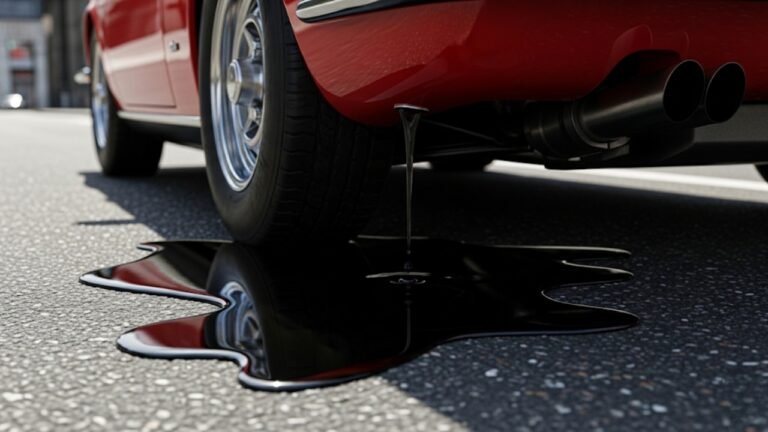Can You Mix Oil Types in a Car?

If you’ve ever stood in front of a shelf full of motor oils—synthetic, conventional, high-mileage, blends—you’ve probably wondered, can you mix oil types in a car? You’re not alone. Whether you’re topping off your engine oil during a road trip or between oil changes, it’s a common question with not-so-simple answers.
The truth is, life happens. Maybe you ran out of your usual oil, or your mechanic used something different this time. But is mixing oil types okay for your engine—or a silent killer lurking under your hood?
Let’s dive into the world of motor oil with friendly, no-nonsense advice to clear up the confusion.
In This Article
- 1 Why Motor Oil Matters More Than You Think
- 2 So, Can You Mix Oil Types in a Car?
- 3 Mixing Synthetic with Conventional: What Happens?
- 4 What About Mixing Synthetic Blends with Full Synthetic?
- 5 The Big Problem: Additive Clash
- 6 Emergency vs Routine: Know the Difference
- 7 Common Oil Mixing Scenarios (And What to Do)
- 8 Personal Story: The Road Trip That Taught Me a Lesson
- 9 How Oil Grades Come Into Play
- 10 Signs You May Have Mixed Incompatible Oils
- 11 Why Car Manufacturers Recommend Specific Oils
- 12 Tips to Avoid Oil Mixing Mistakes
- 13 Pros and Cons of Mixing Oil Types
- 14 FAQs: Can You Mix Oil Types in a Car?
- 14.1 1. Can mixing oil types damage my engine permanently?
- 14.2 2. What happens if I accidentally mix oils once?
- 14.3 3. Is mixing synthetic and conventional oil safe?
- 14.4 4. Can I mix high-mileage oil with regular oil?
- 14.5 5. Can I mix two brands of synthetic oil?
- 14.6 6. What should I do after mixing oil types?
- 14.7 7. Can oil mixing cause sludge?
- 14.8 8. Do I need to flush my engine after mixing oils?
- 15 Final Thoughts: Be Smart, Not Sorry
Why Motor Oil Matters More Than You Think

But not all oils are created equal. There are different types of oil—each made for specific engine needs and driving habits. The main ones include:
-
Conventional oil: basic, budget-friendly, but breaks down quicker.
-
Synthetic oil: high-performance, lasts longer, and resists temperature extremes.
-
Synthetic blend: a mix of both worlds—better protection at a lower cost.
-
High-mileage oil: tailored for engines over 75,000 miles, with extra additives.
These oils don’t just differ in quality—they contain different additives and base stocks. So, when you ask, can you mix oil types in a car, the answer isn’t black and white.
So, Can You Mix Oil Types in a Car?
Here comes the honest answer: Yes, you can mix oil types in a car—but it’s not ideal. It won’t ruin your engine instantly. Your car isn’t going to break down just because you added synthetic to conventional or vice versa. But it may reduce performance, and over time, could impact engine longevity.
For example, if you’re low on oil and all you have is a different type—go ahead and top it off. It’s far better to have some oil than to run your engine dry. Running with low oil is way more damaging than mixing brands or types.
But if you mix regularly? Or use random types during oil changes? That’s where you run into problems.
Why?
Because different oils contain different additive packages. These are the chemicals that clean your engine, fight wear, and reduce corrosion. Mixing them can dilute their strength—or worse, cause them to cancel each other out.
Mixing Synthetic with Conventional: What Happens?
This is the most common mix. Say you’re using synthetic, but your friend only has conventional oil in the garage. You wonder, can you mix oil types in a car like synthetic and conventional?
Technically, yes. They’re compatible. They won’t react like baking soda and vinegar. But there are consequences.
Mixing the two means you no longer get the full benefits of synthetic. The blend won’t resist heat as well or last as long. You’re essentially downgrading your oil.
Think of it like mixing fancy organic coffee with instant powder. It’ll still be drinkable—but don’t expect gourmet taste.
If you top off synthetic with a little conventional in an emergency, don’t stress. Just make sure your next oil change uses a single oil type again to reset your engine’s chemistry.
What About Mixing Synthetic Blends with Full Synthetic?
This one’s a bit more forgiving. After all, synthetic blends already contain synthetic oil. So adding full synthetic to a blend isn’t as jarring as tossing in conventional.
But still—blends vary by brand. One company’s synthetic blend might be 10% synthetic, while another might be 30%. So when you pour in a full synthetic on top, you’re changing the ratio unpredictably.
The result? Your oil won’t perform exactly like a blend or a full synthetic. You’re in a weird gray zone. It’s not harmful short-term, but again—not recommended long-term.
Can you mix oil types in a car this way? Yes. Should you? Not unless you absolutely have to.
The Big Problem: Additive Clash
Let’s get a little technical (don’t worry—it’s still simple).
All engine oils have additives. These are the unsung heroes keeping your engine clean and healthy. We’re talking:
-
Detergents to clean sludge
-
Anti-wear agents to protect metal parts
-
Dispersants to keep debris floating instead of sticking
-
Viscosity improvers to maintain thickness at different temps
When you mix oils, you’re also mixing additive packages. And that’s like mixing two different cleaning products—sometimes, it works okay. Other times, it creates a mess.
For instance, one oil may have more detergents, while the other focuses on anti-wear agents. Mixed together, they can dilute each other, leading to less protection overall.
That’s why most mechanics say: stick to one oil type and brand if you can.
Emergency vs Routine: Know the Difference
Let’s be real. Emergencies happen.
Maybe you’re on a road trip, halfway through nowhere, and the oil light comes on. You’re at a gas station with one lonely bottle of high-mileage oil, and your car normally uses synthetic.
Can you mix oil types in a car in this situation? Absolutely.
In emergencies, always top off your oil—even if it’s not a perfect match. Running dry is far worse than a mismatched mix.
But if you’re at home, planning an oil change? Don’t mix just because it’s convenient. Pick the oil type your car needs, and stick with it.
Common Oil Mixing Scenarios (And What to Do)
Here’s a quick table breaking down common scenarios, and what you should (or shouldn’t) do:
| Scenario | Is It Safe? | Advice |
|---|---|---|
| Synthetic + Conventional | Yes (in emergencies) | Top off only if needed, but get an oil change soon |
| Synthetic Blend + Full Synthetic | Yes | Not harmful, but doesn’t offer full performance |
| High-Mileage + Synthetic | Okay, with caution | Depends on car age and needs |
| Mixing Different Brands | Generally safe | Best to use same brand for consistent additives |
| Routine Mixing | Not ideal | Stick to one type and brand for best results |
Personal Story: The Road Trip That Taught Me a Lesson
Let me share a quick story.
I was on a cross-country drive through Canada’s Rockies. Snow was falling, my heater was on blast, and I noticed the oil warning light flicker. I pulled into a rural gas station. Only oil available? A dusty bottle of conventional 5W-30. My car? It takes full synthetic.
I hesitated. Wondered if I’d make things worse. But then I remembered what a mechanic once told me: “Low oil is worse than mixed oil.”
So, I topped it off, drove on, and got a proper oil change a few days later. No harm done.
The moral? Can you mix oil types in a car during emergencies? 100% yes. Just don’t make it a habit.
How Oil Grades Come Into Play
You’ve probably seen labels like 5W-30, 10W-40, or 0W-20 on oil containers. These are viscosity grades. They show how thick or thin the oil is at different temperatures. The first number (with the “W”) reflects cold-weather flow, while the second shows high-temp performance.
So, can you mix oil types in a car if they have different grades?
Technically, yes. But it’s not recommended unless it’s an emergency. Mixing 5W-30 with 10W-40, for example, changes how the oil flows. Your engine may get too thick or too thin of a blend, which affects startup protection and heat resistance.
The best rule? Always use the oil grade your car’s manual recommends. If you must mix grades, keep the change temporary and replace it at the next oil change.
Signs You May Have Mixed Incompatible Oils
Your car won’t start smoking the moment you mix oil types. But over time, mixing incompatible oils can lead to subtle symptoms that hurt your engine’s health. Watch for:
-
Decreased fuel efficiency
-
Sluggish acceleration
-
Odd engine noises or ticking
-
Dark, sludgy oil
-
More frequent oil top-ups
These signs mean your oil may not be protecting your engine properly. If this happens after you mixed oils, it’s best to do a complete oil change with the correct oil type and filter. It’s like hitting the reset button for your engine.
Why Car Manufacturers Recommend Specific Oils
Car makers aren’t just picky—they test engines for years to figure out what oil works best. They consider temperature ranges, wear points, fuel types, and engine designs. That’s why you’ll see a specific viscosity grade and oil type listed in your owner’s manual.
Ignoring this and mixing randomly? It’s like ignoring a doctor’s prescription and taking whatever’s in the medicine cabinet. The results might not be tragic immediately—but they could be later.
And if your car’s under warranty, using the wrong oil or mixing brands might void coverage. Manufacturers can deny repairs if they see the oil wasn’t up to spec.
Tips to Avoid Oil Mixing Mistakes
You don’t need to be a mechanic to avoid oil mixing errors. Just follow a few smart habits:
-
Stick to one oil type once you choose it—especially synthetic.
-
Read the label before topping off. Make sure the grade and specs match.
-
Keep a spare bottle of your preferred oil in your trunk.
-
Log your oil changes and what oil was used.
-
Choose a reputable brand and stick with it.
And when in doubt? Ask your mechanic or check your manual. Don’t guess when it comes to your engine.
Pros and Cons of Mixing Oil Types
Let’s sum up the good and bad of mixing oils in a clear list.
Pros:
-
Safe in emergencies
-
Won’t immediately damage engine
-
Better than running low on oil
-
Blends are already part synthetic
Cons:
-
Reduced oil performance
-
Possible additive conflict
-
Can void warranties
-
Long-term wear risks
-
Harder to diagnose engine problems
Bottom line: Can you mix oil types in a car? Sure—but don’t make it a habit unless you want to gamble with your engine’s lifespan.
FAQs: Can You Mix Oil Types in a Car?
1. Can mixing oil types damage my engine permanently?
Not immediately. But over time, mixed additives and reduced protection can lead to wear and tear that shortens engine life.
2. What happens if I accidentally mix oils once?
No panic needed. Your engine will likely be fine. Just go back to a single oil type at your next change.
3. Is mixing synthetic and conventional oil safe?
Yes, they’re chemically compatible. But performance may decrease, and it’s not ideal long-term.
4. Can I mix high-mileage oil with regular oil?
Yes, but it dilutes the additives meant for older engines. Use high-mileage consistently for best results.
5. Can I mix two brands of synthetic oil?
You can. But different brands may have different additives. Try to stick to one brand if possible.
6. What should I do after mixing oil types?
Plan an oil change soon. Use a matching oil type and new filter to reset your system.
7. Can oil mixing cause sludge?
Yes—especially if low-quality oils or incompatible additives are mixed. That’s why sticking to a single type is smart.
8. Do I need to flush my engine after mixing oils?
Not usually. A standard oil change is enough unless sludge or damage is present.
Final Thoughts: Be Smart, Not Sorry
Cars are like people—they need consistent care. One bad meal won’t ruin your health, and one oil mix won’t kill your engine. But regular mismatches? That’s where trouble starts.
So, can you mix oil types in a car? Yes, when life throws you a curveball. But choose the right oil, stick with it, and treat your engine like the investment it is.
Because when your car runs well, so does everything else—your commute, your adventures, and your peace of mind.






